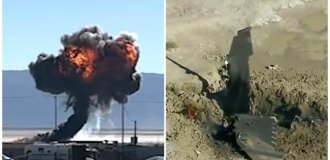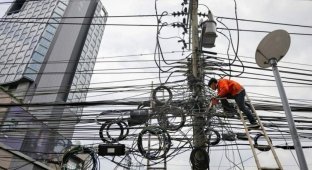Why are there such crazy wires in Japan (9 photos)
You've seen it in movies and anime, maybe even seen it in person on the streets of Japanese cities - just a terrible tangle of wires, endless black cables covering the sky across the entire street. Experienced electricians then see all this art in nightmares and are sure that this is what hell looks like. 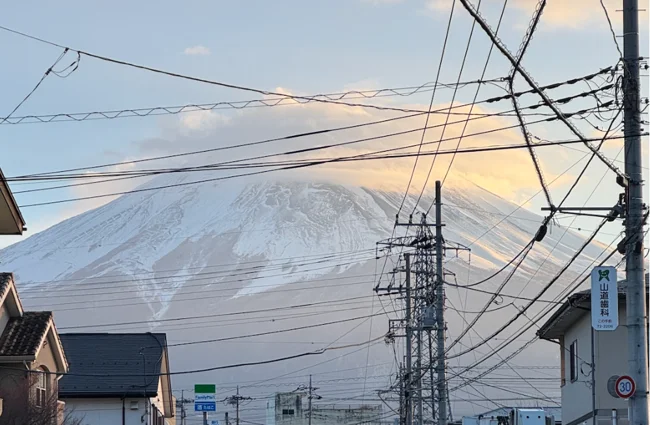
A very Japanese landscape
Why is Japan so terrible with power lines? Why don't they put them underground at least partially? Similar tangles can be found in India and Thailand, but not to such an extent. Recently it was calculated that in central Tokyo only 8% of the cables are underground. So if you want to see how many cables actually connect us in real life, look at everyday photos of Tokyo streets. 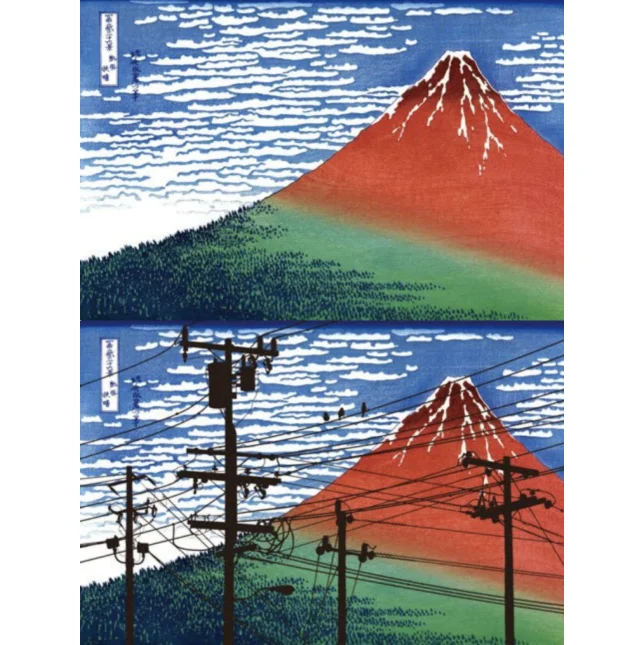
An old picture of Mount Fuji, as it would look now)
In fact, even in India it is not so much, Greece with 11% of underground cables and Ireland with 17% are close to the same. In Europe, this figure is usually around 80%. At the same time, underground cables are considered more reliable because they are not exposed to winds, snow accumulation, icing and breaks due to it. Well, thieves can't dig them up unnoticed, and in Japan you can rob an entire neighborhood overnight. That's why in Japan they don't hang wires, but overhead cables, which are denser and more insulated than regular power lines. Which makes them even more visible in the urban landscape. This helps prevent dangerous direct contact between animals. 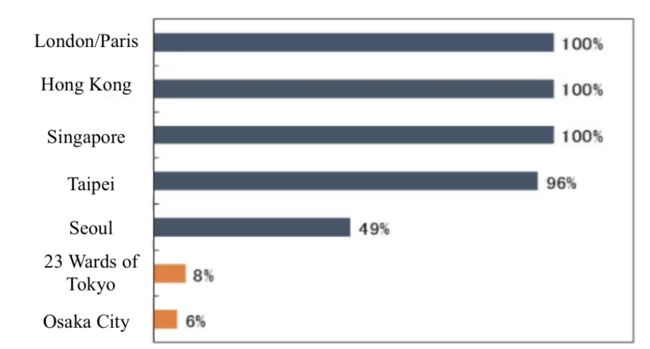
Percentage of underground wires in different regions
But they are not protected from typhoons. And typhoons in Japan can be strong. In 2019, Typhoon Faxai hit Chiba Prefecture, its powerful winds knocking down nearly 2,000 power transmission towers. More than 930,000 homes were left without power. As many know, the Japanese came up with the idea of overhead power lines because of earthquakes. 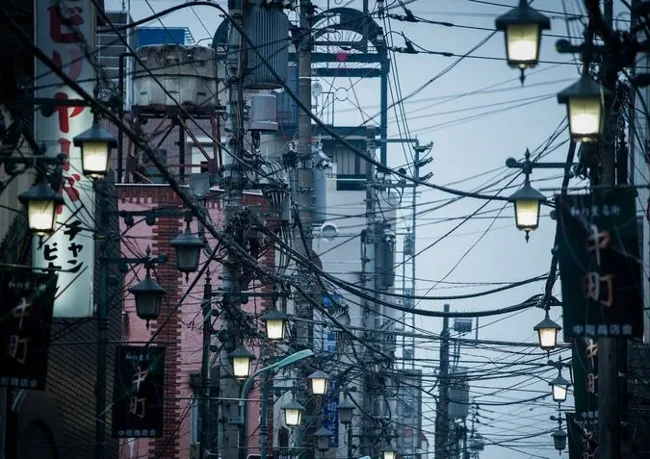
A street somewhere in Tokyo
Strong earthquakes disrupt or rupture underground power lines, and repairs can take much longer than overhead ones. A partially damaged overhead power line can be repaired in minutes; digging, searching, isolating, and repairing underground systems can take weeks. However, although earthquakes are an obvious cause of overhead power lines in Japan, the reality is not so clear-cut. In fact, areas with a large number of overhead power line supports suffer more damage from earthquakes than those with underground ones! Suddenly, huh? Because the poles fall and pull each other down. 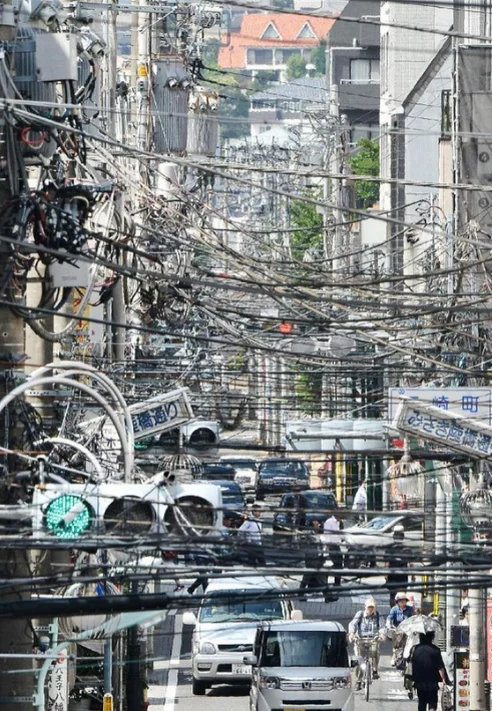
SO BEAUTIFUL, HUH?
The fallen poles also prevented emergency vehicles from easily moving along the streets of destroyed Kobe, especially since all the roads there were like a spider web. But we need to hurry to save people! And if you dig deeper, the real obstacle to underground power lines is the issue of too high cost. Underground communications are expensive. In most countries, the initial cost of installing an underground power line will be two to four times more expensive than overhead. And in Japan, it is even more expensive than elsewhere.
Why is it the same in Japan, but more expensive? 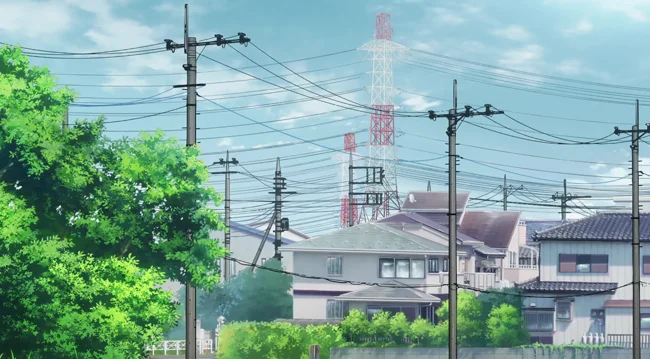
A frame from any random anime
Underground work in Japan is 20% more expensive than in France, for example. And the rules for underground cable laying in Japan are more complicated than in other countries. Even simply obtaining permits to lay electric wires on the complex map of municipalities and special districts of Japan is now almost impossible due to confusion. Maybe AI will save the country here, think it all out itself... Local authorities do not have the strength, time and understanding of all the madness in the documents to lay even one line underground. So everyone "lived normally, what's the point of starting here." 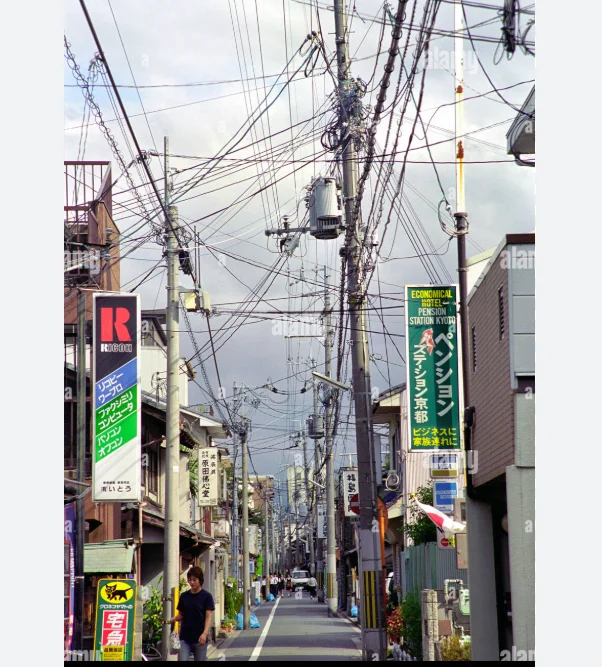
See the bags? There's a garbage truck driving in this cramped space
And because of the poles, the already narrow Japanese streets become even more impassable. Have you noticed that Japan produces super-narrow trucks for itself? Because otherwise you can't squeeze through the streets or move anywhere. There are also many wire lovers in Japan. Yes, yes, they believe that such wires are part of the country's unique appearance, one of the most recognizable elements. To lose them is to lose uniqueness. 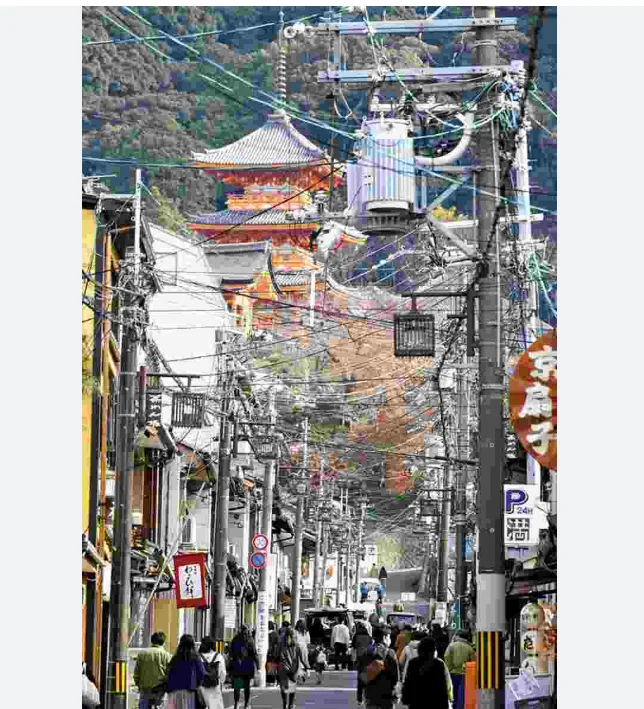
Imagine, one pole falls AND PULLS EVERYTHING WITH IT
And the most important irony is that in the very beginning, the wires were laid underground! Not so many years of universal electrification for this to become a centuries-old tradition. Before the war, they started to make underground wire lines very successfully. But after the bombings during the war, it was necessary to restore the cities faster, so everyone switched to the technology of quickly throwing wires overhead. And then it was too late to roll back, half the country was already wired overhead. The poles were already standing, throwing new cables on them was simply convenient and cheap. Moreover, in Japan after the war there was real poverty, no time for planning the future. But it was necessary to quickly build a modern economy, in which there is always a high demand for electricity. 
An experimental street in Japan, even somehow strange, right?








